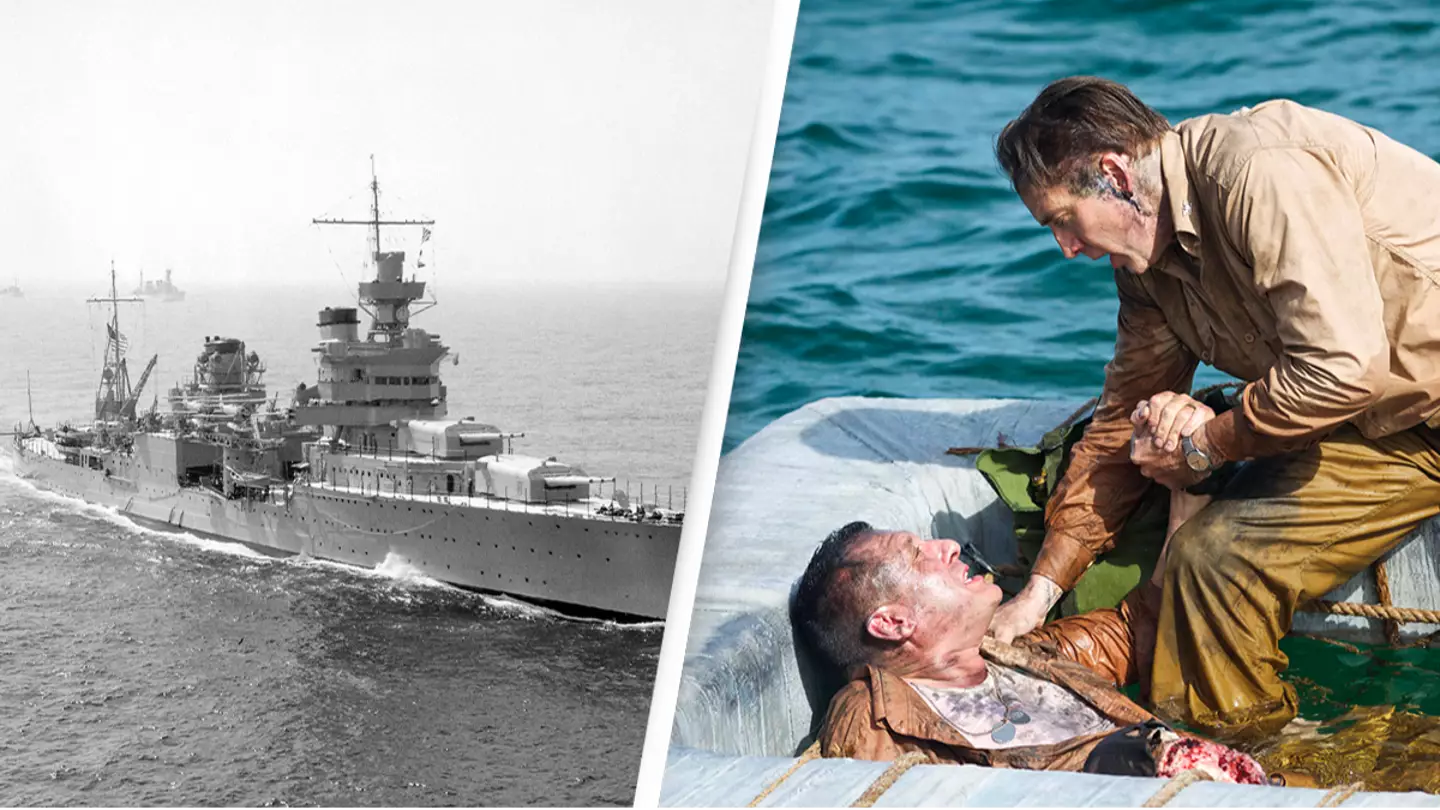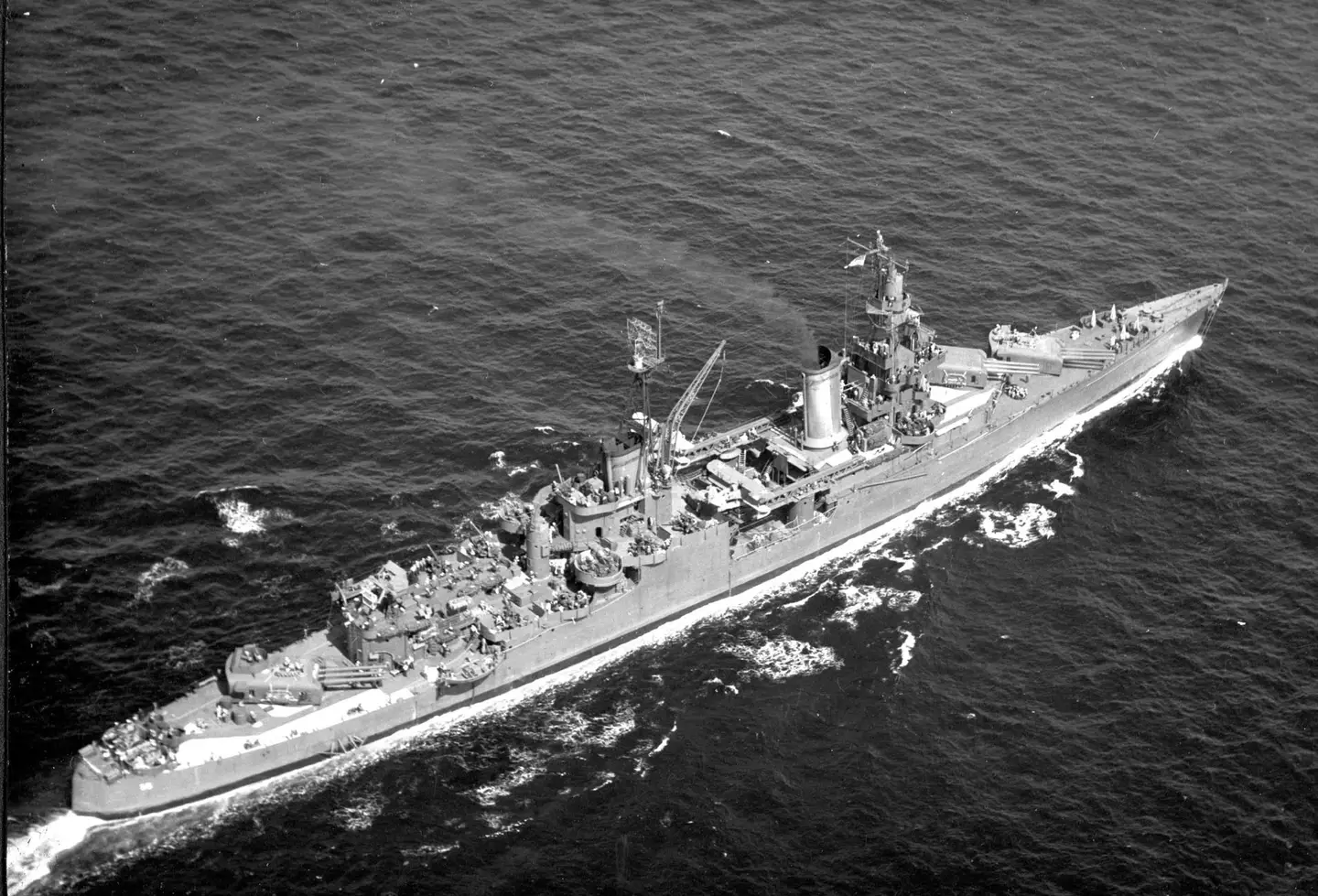
On 30 July, 1945 around 900 men went into the Pacific Ocean after their ship had been sunk, and waiting for them was a horde of ravenous sharks.
Of the nearly 900 who went into the water, only 316 were rescued after a gruesome four-day feeding frenzy.
It is thought that as many as 150 men were eaten by the predators during the wait for rescue, making it the worst recorded shark attack in history.
You might recognise this as the sinking of the USS Indianapolis, the US Navy heavy cruiser that was torpedoed while on a secret mission.
That mission was to transport enriched uranium and other parts crucial to building the 'Little Boy' atomic bomb that would be dropped on the Japanese city of Hiroshima.
Advert

The Indianapolis had successfully completed its secret mission when it was sailing for the island of Leyte, where just after midnight it took two torpedoes from a Japanese submarine and began to sink.
The torpedoes triggered a chain of explosions that rolled the ship over and caused it to sink in just 12 minutes.
Of the 1,195 crew members aboard the vessel, around 900 were still alive when they went into the water. The survivors were left bobbing in the water with few life rafts and forced to face the prospect of dying out in the middle of the ocean with nobody there to save them.
Advert
That's when the sharks came, drawn by the sound of the explosions and the thrashing of hundreds of people in the water.
The Oceanic Whitetip is considered to be one of the most aggressive sharks in the world, and a large group of them was headed right for the survivors.
Most sharks don't actually attack humans and will often give a person a curious bite before swimming off.
Not these sharks, they sensed blood in the water and were intent on picking off the sailors one by one.
Advert
On the first night they largely focused on the floating bodies of dead men, but as more blood was spilled in the water it drew even more sharks who were enticed the thrashing bodies and kicking legs of hundreds of men trying to stay afloat.

For four days those men had to stay in the water as the sharks fed first on the dead and then on the living, killing up to 150 of the shipwrecked survivors.
Even those who weren't killed by the sharks ended up as food for them as hundreds of men perished from exposure, dehydration and salt poisoning after some tried to drink seawater.
Advert
It wasn't until 11.00am on the fourth day that they were finally found, a US Navy plane spotting the survivors and radioing for help.
An hours-long rescue operation was launched and the last of the survivors was pulled free from the clutches of the water and the teeth of the sharks just after midnight.
You might be familiar with this particular tale if you've seen the film Jaws, as in a chillingly brilliant scene veteran shark hunter Quint (Robert Shaw) tells the whole tale.
Advert
In a cruel twist of fate many taken by the sharks could have been saved as, contrary to Quint's story in Jaws, the ship had actually sent out a distress signal.
Three stations received the signal but none responded as one commander was drunk, another had been ordered not to be disturbed and a third thought it was a trap by the Japanese to lure the Americans out.
Another film on the ship's sinking and subsequent shark attack is 2016's USS Indianapolis: Men Of Courage, with Nicholas Cage starring as ship captain Charles McVay, who was wrongly blamed for the sinking and only exonerated in 2000.
If you have a story you want to tell, send it to UNILAD via [email protected]
Topics: Animals